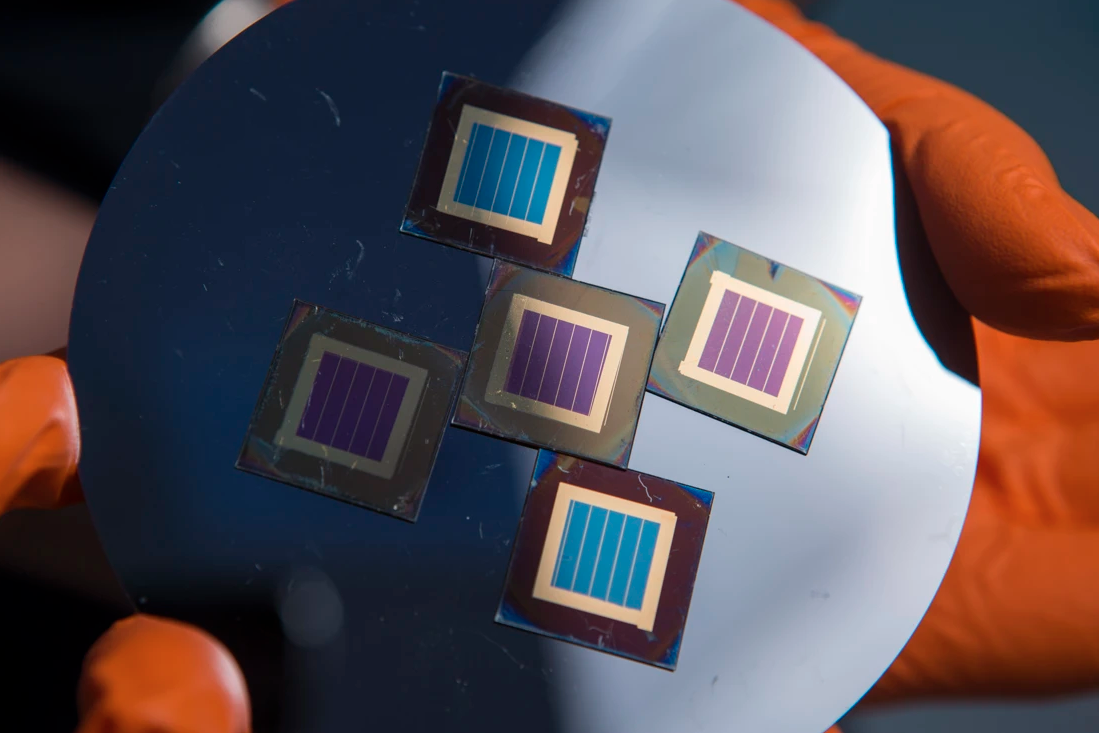Researchers at Australian National University (ANU) have set a new efficiency record for perovskite-silicon tandem solar cells while exploring the effect of surface coating versus the bulk incorporation of two-dimensional perovskites. As tandem cells approach the 30% efficiency mark, the ANU researchers hope that their achievement will help to improve the technology’s commercial competitiveness.
While silicon solar cells are omnipresent in the market, it seems that perovskites have been on the brink of commercialization for several years now, with many leading research institutes taking an interest in their potential to provide a low-cost, high-efficiency alternative. Stacking a perovskite solar cell on top of a silicon cell offers the promise of squeezing more energy out of sunlight due to the ability of perovskites to react to various different wavelengths of light, unlike silicon solar cells, which are made of inorganic materials and can only efficiently absorb red light.
As of late, mixed‐dimensional perovskite solar cells combining 3-D and 2-D perovskites have attracted interest due to their improved efficiency and stability. Yet it remains unclear which method of combining 3-D and 2-D perovskites works best. To address this, scientists have looked at different ways to combine 2-D perovskites with 3-D perovskites – namely, surface coating and bulk incorporation.
By using a surface‐coating strategy with n‐butylammonium bromide to fabricate semitransparent perovskite cells and combining them with silicon cells in four‐terminal tandem configurations, the ANU researchers have achieved 27.7% tandem efficiency with interdigitated back contact silicon bottom cells (size‐unmatched). They have also achieved a 26.2% efficiency rate with passivated emitter with rear locally diffused silicon bottom cells in a 1 cm2 size‐matched tandem.
Professor Kylie Catchpole says this only needs to improve slightly – to around 30% – before the technology can be rolled out around the world. “This result demonstrates the potential of tandem solar cells. They can make better use of certain parts of the solar spectrum – for example, high energy blue photons,” she said.
The team is now working on hitting even higher efficiency rates, while further improving the stability of the new solar cells with financial support from the Australian Renewable Energy Agency (ARENA). “The International Technology Roadmap for Photovoltaics predicts tandem solar cells will appear in mass production in 2023, so we’re very close,” said Dr. The Duong, the lead researcher.
In January, a group of scientists at Helmholtz-Zentrum Berlin (HZB) produced a perovskite/silicon tandem cell at 29.15% efficiency – a new world record for the technology. HZB previously held the efficiency record for PS/Si tandem cell efficiency at 25.5%, before UK-German startup Oxford PV pushed further to produce a 28% efficient cell in late 2018. HZB’s new record has been officially certified by Germany’s Fraunhofer ISE, and the group says that it will now target the 30% barrier for this technology.
This article was amended on 11/03/20 to remove the statement that silicon solar cells can only absorb red light.
This content is protected by copyright and may not be reused. If you want to cooperate with us and would like to reuse some of our content, please contact: editors@pv-magazine.com.




“silicon solar cells, which are made of inorganic materials and can only absorb red light.” I know you write popularization of technology topics, but don’t oversimplify things.
Silicon can absorb solar spectrum up to wavelength of 1127 nm. (so basically it is even sensitive to ultraviolets). It’s just that it doesn’t do it efficiently for shorter wavelengths, as it’s gap is 1,1 eV.
Thanks Vincent, It’s not really a simplification, more of a mistake that came out of repeating the inaccurate statement which was issued by the comms folks at ANU. Fortunately we have our pv magazine community to pull us up on such errors and educate us each day so thanks again.